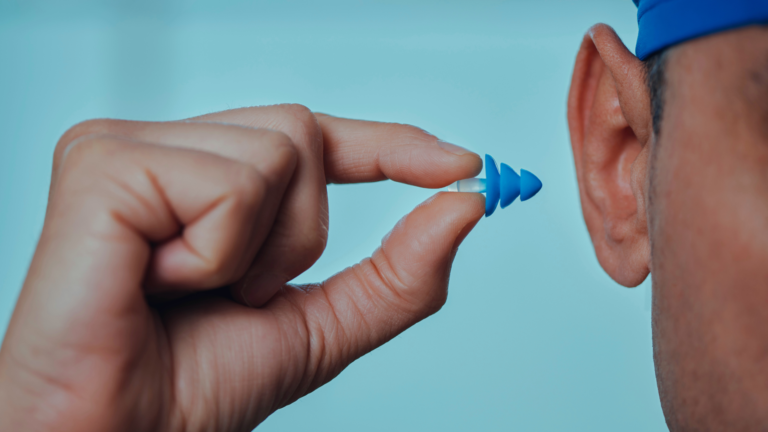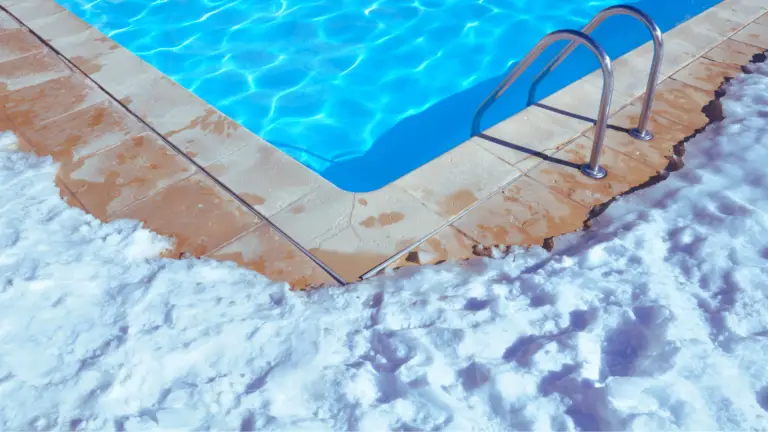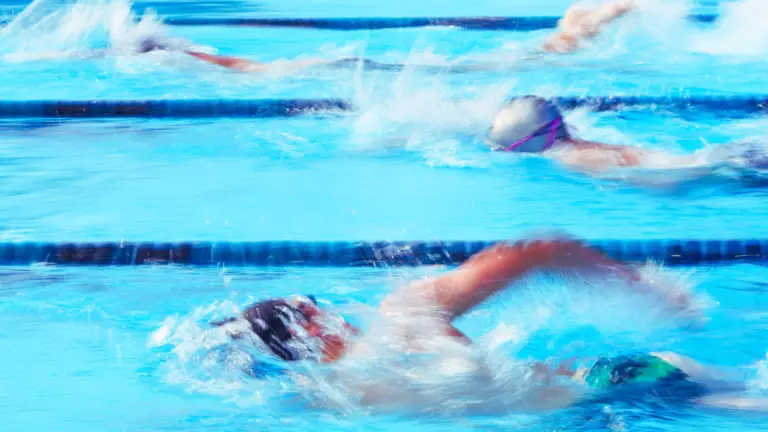Ah, the refreshing feel of swim spa water on a hot day! But have you ever paused to think about how often you should change that water? Dive in with me as we explore the importance of regular water changes in swim spas. Just like maintaining a swimming pool, ensuring your swim spa has fresh and clean water is crucial for a myriad of reasons. In this complete guide, we’ll delve into the factors that influence the frequency of water changes.
If you’re looking for a quick answer…
Maintaining your swim spa water is vital for a refreshing and hygienic experience. After extensive research and based on personal experience, we recommend changing the water every six months for heavy usage and every twelve months for less frequent use. Don’t compromise on the quality of your swim spa water – follow our expert advice and enjoy a crystal-clear and invigorating swim spa all year round! 💦
Understanding Swim Spa Water Maintenance
Swim spas, often interchangeably referred to as hot tubs, are a delightful luxury. But with great luxury comes great responsibility. Here’s what you need to know:
Role of Water Chemicals and Filters
- Water chemicals play a pivotal role in maintaining the spa water quality. They help neutralize contaminants and ensure your hot tub water remains safe for use.
- Water filters, on the other hand, trap physical debris and impurities.
Testing Water Regularly
- It’s essential to test the water frequently for pH, sanitizer levels, and total dissolved solids (TDS). I can’t stress this enough. Once, I neglected this for a month, and my spa water turned cloudy. Trust me; you don’t want that!
- Using water test strips or liquid reagent testing kits can help you keep tabs on the water chemistry.
The Role of Total Dissolved Solids (TDS) in Water Changes
Total Dissolved Solids (TDS) refer to the collective amount of various inorganic and organic substances dissolved in water. These substances can include minerals, salts, metals, and other impurities. Think sunscreen, hair products, detergent in your swimsuit, etc.
In the context of swim spa water maintenance, monitoring TDS levels is crucial in determining when water changes are necessary. As water is used and chemicals are added to maintain water quality, TDS levels gradually increase. High TDS levels can lead to water that appears cloudy, hinders the effectiveness of sanitizers, and affects overall water quality.
By regularly testing TDS levels, spa owners can identify when the concentration of dissolved solids becomes too high, indicating the need for a water change to restore fresh and clean water in the swim spa.
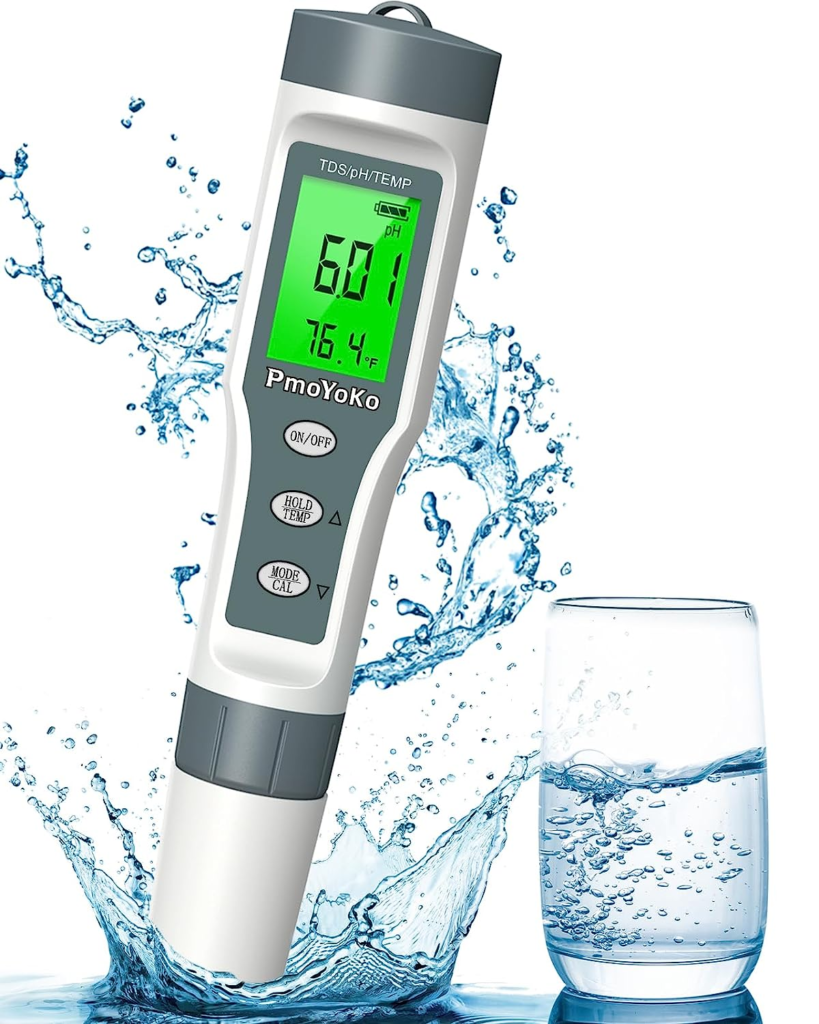
Digital pH/TDS Meter
I’ve found great success with this option. Get precise water quality measurements with the Digital pH/TDS Meter. This 3-in-1 pH tester accurately measures pH, TDS, and temperature, ensuring healthy water quality. Its automatic calibration, high accuracy, and backlit LCD make it perfect for your swim spa.
Tips for Balancing and Maintaining Water Chemistry
Maintaining water chemistry and keeping the water clean is no rocket science, but it does require some know-how:
- pH Balance: Aim for a pH level between 7.2 to 7.6. If it goes too high or too low, the water can turn corrosive or irritating to the skin.
- Sanitizer Levels: Use bromine or chlorine to keep bacteria at bay. Maintain the right levels to ensure a hygienic environment.
- Total Dissolved Solids (TDS): Keep an eye on TDS levels; too many dissolved solids can lead to cloudy water and affect the effectiveness of chemicals.
- Regular Maintenance Schedule: Clean your swim spa regularly, removing debris and dirt. This will reduce the strain on your filter and chemical system.
Charts to Simplify Water Maintenance
Here’s a handy table to help visualize water maintenance:
| Test Frequency | Ideal Range | Actions to Take |
|---|---|---|
| pH Level | 7.2 – 7.6 | Adjust with pH increaser or decreaser as needed |
| Sanitizer (Chlorine/Bromine) | 3 – 5 ppm (mg/L) | Add sanitizer if levels are too low, shock if too high |
| Total Dissolved Solids (TDS) | <1500 ppm (mg/L) | Drain and refill water if TDS levels are too high |
Factors Affecting Water Change Frequency
Now, let’s address the million-dollar question: how often should I change the water in a swim spa? Well, it depends on several factors:
Spa Usage Frequency
If you’re a daily swimmer or have many guests frequently enjoying the spa, consider changing your hot tub water every three to four months. Frequent use increases the load on water chemicals and filters, leading to faster water deterioration.
If you use the swim spa occasionally or diligently shower before entering, you might extend the water change interval to six months or more.
Water Quality
If you meticulously maintain water chemistry and follow regular testing and balancing routines, the water may stay cleaner for a more extended period.
Environmental Factors
Outdoor swim spas are more prone to environmental contaminants like leaves, pollen, and debris. If your swim spa is outdoors, you might need more frequent water changes.
Filter Performance
Regularly inspect and clean your filters to ensure they are performing optimally. A well-maintained filter will prolong the time between water changes.
Spa Cover Usage
Using a high-quality spa cover will help retain heat, reduce evaporation, and protect the water from debris, contributing to cleaner and fresher water.
Water Appearance and Odor
Trust your senses! If the water looks murky, has an unusual odor, or becomes foamy, it’s a clear sign that it’s time for a water change.
Maintaining your swim spa isn’t just about aesthetics. It’s about ensuring the water is safe, clean, and refreshing every time you take a dip. Regular water changes, combined with routine maintenance, will ensure your spa remains a haven of relaxation.
Expert Recommendations and Best Practices
It’s always helpful to get insights from experts in the field. Let’s hear what spa manufacturers and professionals have to say about optimal water change schedules:
Master Spas’ Recommendation
Master Spas, a renowned name in the spa industry, advises changing the water in your swim spa every six months. Following their recommendation can help maintain water quality and prolong the life of your swim spa.
Industry Experts’ Opinions
Different experts have different opinions when it comes to water change frequency. Here’s what some of them have to say:
- The Spa Retailer suggests water changes every three to four months for the best experience.
- Pool and Spa News leans towards more frequent water changes every three months, especially if the spa is used heavily.
- The Swim Spa Authority recommends water changes every four to six months, aligning with Master Spas’ advice.
- Swim Spa Reviews provides a comprehensive guide, suggesting water changes every three to six months, depending on usage and maintenance.
Remember, expert recommendations can serve as valuable guidelines, but you should also consider your unique swim spa usage and environment when determining the optimal water change frequency.
Signs That It’s Time to Change Your Hot Tub Water
Sometimes, your spa will give you clear signs that it’s time for a change. Here’s what to look out for:
Deteriorating Water Quality: If you notice the water becoming increasingly difficult to balance, it might be time for a change. Remember, maintaining a swim spa is all about ensuring the water is fresh and clean.
Excess TDS (Total Dissolved Solids): High TDS levels can indicate a buildup of contaminants. Using test strips and digital meters can help you monitor these levels.
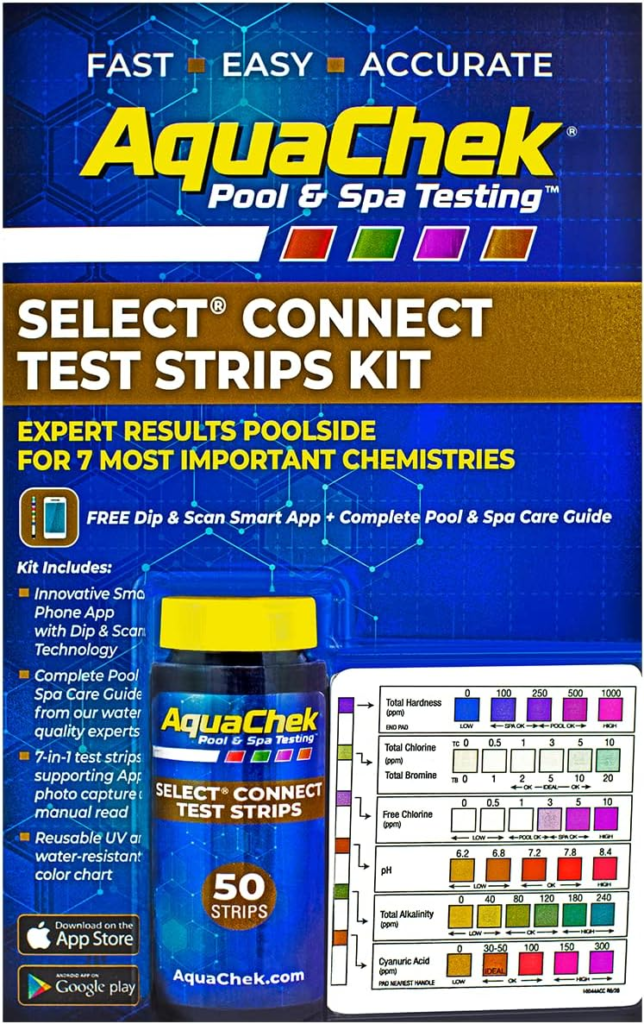
AquaChek Test Strips
My favorite test strips help me maintain crystal-clear and healthy pool or spa water. This AquaChek Select Connect 7-Way Pool and Spa Test Strips complete kit allows you to easily test for pH, total chlorine, free chlorine, bromine, alkalinity, total hardness, and cyanuric acid. No more messy drops; just dip the strip and compare the color to the chart. Get accurate results and enjoy safe water with this convenient test kit.
Cloudy Water: Cloudy water is a clear sign that your spa needs attention. Whether it’s due to contaminants, imbalanced chemicals, or other factors, cloudy water should never be ignored.
Unpleasant Odors: If your spa starts to emit an unpleasant odor, it’s a clear sign that the water needs changing. A well-maintained spa should always smell fresh.
Steps to Properly Change The Water
Changing the water in your spa might seem daunting, but with the right steps, it’s a breeze. Here’s a step-by-step guide:
- Drain Your Spa: Turn off the spa and open the drain valve to drain the water. Use a garden hose to help direct the water away from the spa area. Remember to clean the spa filters during this time.
- Clean the Spa: Before refilling, give your spa a thorough cleaning. This ensures that the new water remains clean for longer. Pay attention to the jets and other hard-to-reach areas.
- Refill the Spa: Use a garden hose to refill your spa. Ensure the water level is appropriate as per the manufacturer’s recommendation.
- Balance the Water Chemistry: Once refilled, test the water using test strips or liquid reagent testing kits. Adjust the pH, sanitizer levels, and other chemical levels as needed by adding chemicals to the water.
- Turn On the Spa: Once everything is in order, turn on the spa and let it run for a few hours. This helps in circulating the chemicals and ensuring the water is well-balanced.
- Regular Maintenance: Remember, the key to a long-lasting spa is regular maintenance and keeping the water chemistry balanced. Keep an eye on the water quality, ensure the swim spa cover is in good condition, and enjoy your spa!
Water Conservation and Eco-Friendly Alternatives
As a swim spa owner and California resident, I understand the importance of water conservation. Here are some eco-friendly alternatives to consider:
Minimize Water Wastage: Be mindful of the water level when refilling your spa. Overfilling can lead to unnecessary water wastage. Consider using a swim spa cover to reduce evaporation, keeping your spa water fresh for longer.
Water Recycling and Reuse Strategies: Consider using greywater systems to recycle and reuse water. This can be especially useful for large swim spas. Another option is to use the old spa water for watering plants or cleaning outdoor areas. Remember to adjust the chemical levels before doing so!
Looking to extend the use of your swim spa into those cold winter months? 🥶 Check out my article, Can You Use a Swim Spa in the Winter? Tips, Benefits, and Precautions for helpful insights on enjoying your swim spa year-round.
FAQ
Conclusion
In conclusion, regular water changes are the lifeblood of optimal swim spa performance. Not only do they ensure your spa remains a haven of relaxation, but they also contribute to the longevity of your spa. Remember, maintaining clean and hygienic swim spa water isn’t just about aesthetics; it’s about your health and well-being.
So, whether you’re a seasoned swim spa owner or a newbie, I hope this guide has provided valuable insights into the world of swim spa maintenance. Keep your water fresh, your spa clean, and enjoy the endless benefits of your personal oasis. Dive in, relax, and let the water work its magic!


